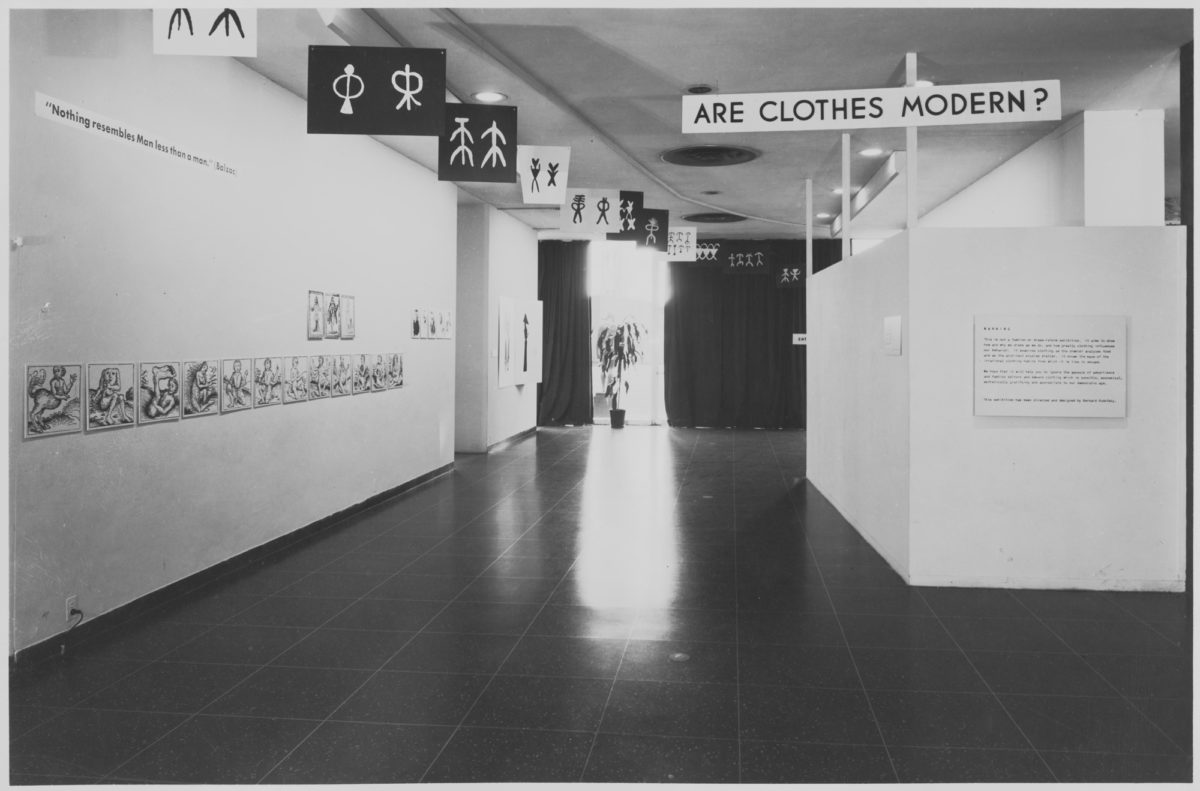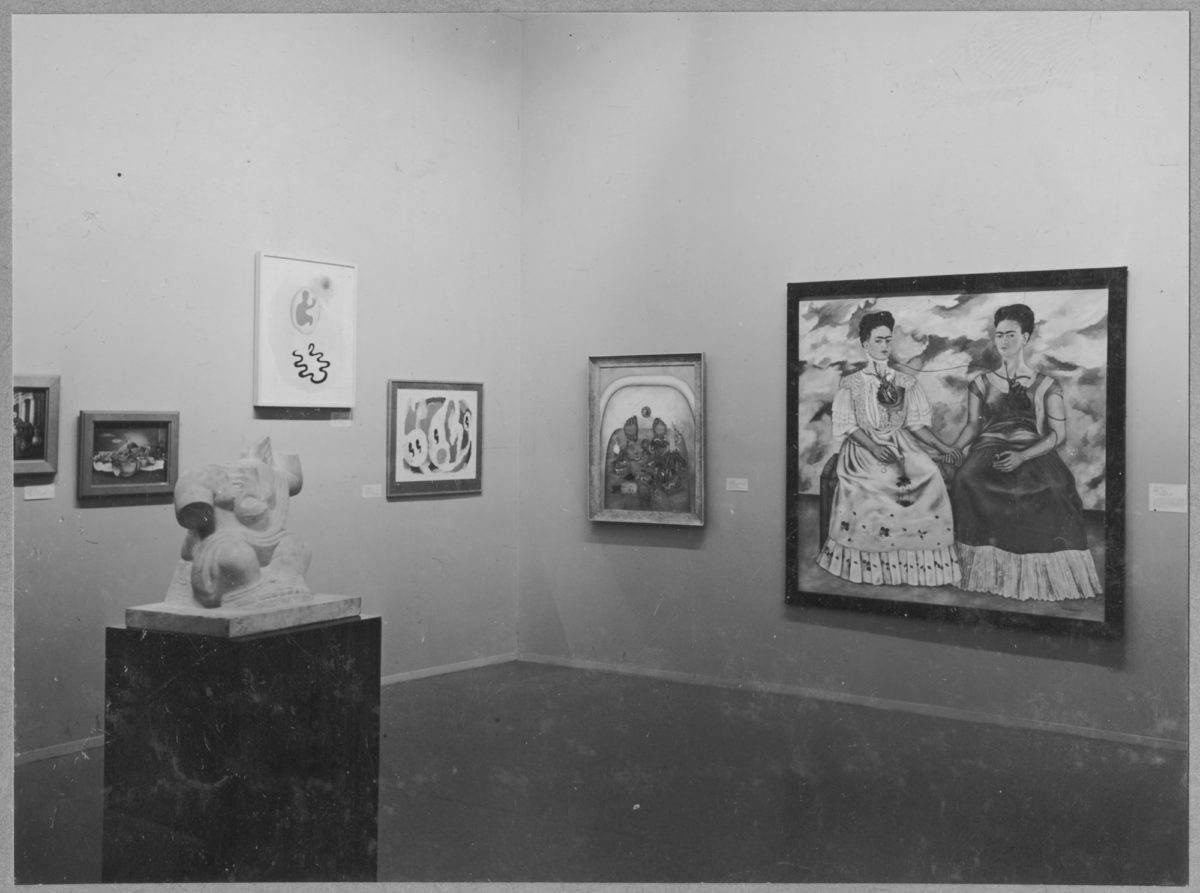[ad_1]

Installation view of “Twenty Centuries of Mexican Art,” 1940, at Museum of Modern Art, New York.
COURTESY MUSEUM OF MODERN ART
The Museum of Modern Art in New York will reopen after a $450 million renovation and expansion on October 21, marking one of the most dramatic transformations in the institution’s long and storied history. In the run-up to the museum’s next incarnation, ARTnews looks back to important exhibitions from MoMA’s past and offers excerpts from articles and reviews from our archives—moving decade by decade from the museum’s inauguration to the present day. The second edition in this series features six shows from the 1940s at MoMA, including a major survey of Mexican art and the first major retrospective for a woman at the museum.
“Twenty Centuries of Mexican Art”
May 15, 1940–September 30, 1940
The show: One of the most ambitious exhibitions ever staged at MoMA sought to survey the whole of Mexican art, with more than 5,000 objects taking up every floor—and even the courtyard—of the museum. Three significant Mexican art historians—Alfonso Caso, Manuel C. Toussaint, and Roberto Montenegro—were brought on to stage the show, along with artist Miguel Covarrubias, who organized a section about modern art in the country. The show’s offerings were not limited to what was on view in the galleries: visitors could watch José Clemente Orozco paint a fresco during the show’s run, and they could attend a performance series of work by Mexican musicians.
What ARTnews said: “Nothing on so comprehensive a scale has ever been attempted, and no one section has ever been so completely reviewed in Mexico or in this country. This gives to the Museum visitor a chance to follow the evolution of a complex civilization in the succeeding phases, and the imagination is stimulated by such comparisons as that between the fabulous wealth and elaborate culture which existed when the Spaniards conquered Mexico, and the simultaneous states of our own country when its Indian tribes were living in what was virtually the Stone Age. But even more striking than such contrasts as this, is the one which suggests itself between the catacylsmic present little understood, and the evolution of past eras, here seen in perspective.” —Jeannette Lowe
“Sixty Photographs: A Survey of Camera Esthetics”
December 31, 1940–January 12, 1941
The show: The first show held by the newly formed photography department, “Sixty Photographs” offered a survey of lens-based works owned by MoMA, and was curated by Beauford Newhall along with photographer Ansel Adams, who consulted with Newhall on the department’s early exhibitions. In 1944 Adams would go on to debut a series of photographs of Japanese-American internment camps at MoMA.
What ARTnews said: “The exhibition, assembled with the coöperation of Ansel Adams, the noted Californian photographer, is not inclusive and is intended merely to suggest the possibilities of photographic vision. The exhibits range from objective interpretations of fact to abstract creation by the form of cameraless shadowgraph.”
“Paintings of Jacob Lawrence”
October 10, 1944–November 15, 1944
The show: Jacob Lawrence’s “Migration Series” (1940–41), a 60-work group of paintings detailing the migration of black Americans from the South to the North during World War I, was assembled in full for this exhibition, made possible through the series’ joint ownership by the Phillips Collection in Washington, D.C., and MoMA. Though the works were set in the past, a release said “it is extremely pertinent today because of the similar labor shortage brought about by World War II.”
What ARTnews said: “The sixty panels tell a story strangely contemporary to World War II. These are facts made moving and alive, through understatement.” —Aline B. Louchheim

Installation view of “Are Clothes Modern?,” 1944–45, at Museum of Modern Art, New York.
COURTESY MUSEUM OF MODERN ART
“Are Clothes Modern?”
November 28, 1944–March 4, 1945
The show: While a release for “Are Clothes Modern?” claimed that it was “in no way a fashion show,” the works on view here were largely wearable garments from throughout the ages. Though it was hardly the first design show at MoMA, it was one of the boldest because it seemed to have very little to do with the paintings and sculptures typically shown by the museum. That same release did state, however, that the show’s interest was in how fashion mirrored architectural trends of the day, specifically functionalism.
What ARTnews said: “The show is enormously provocative. It, too, does a lot toward dispelling the attitude that the museum is too grand a place in which to take up the little problems of our daily lives.” —Rosamund Frost
Georgia O’Keeffe
May 14, 1946–August 25, 1946
The show: Having been launched to fame by artist Alfred Stieglitz’s 291 gallery in New York, Georgia O’Keeffe became the first woman to have a major solo show at MoMA 17 years after its opening. (Stieglitz was also O’Keeffe’s longtime husband.) Included were a number of O’Keeffe’s famed pictures of flowers.
What ARTnews said: “If you walk through [the show] before you read the catalogue you will be able to form your own picture of what she represents in American art without interruptions on the part of Mr. Stieglitz. The ‘291’ publicity technique need not bewilder you in all its wonderful simplicity until you feel ready to take it.”
Mies van der Rohe
September 16, 1947–January 25, 1948
The show: One of the major modernist architects of his day, Ludwig Mies van der Rohe was the subject of a major retrospective at MoMA nearly a decade after the completion of his campus for the Illinois Institute of Technology in Chicago, where he was director of the architecture school. Van der Rohe’s designs were represented by large photographic prints, and examples of his stripped-down furniture were also included.
What ARTnews said: “Mies van der Rohe’s accomplishment of the past thirty years shows unwavering consistency. There is no compromise. It is an orderly record of innovating and refining.” —A. James Speyer
[ad_2]
Source link

